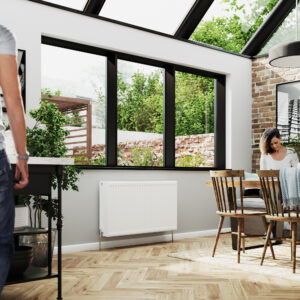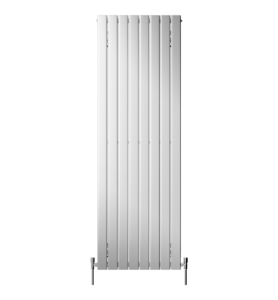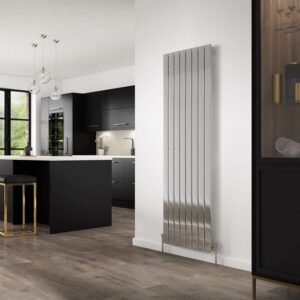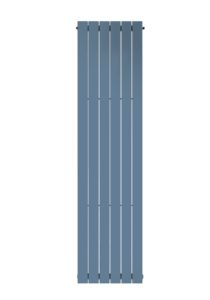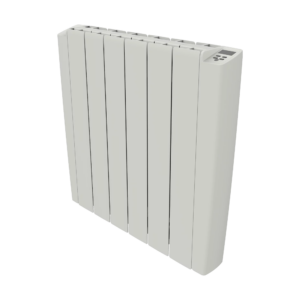Whilst radiators are being installed on a daily basis in new build homes up and down the country, the majority of radiators purchased are installed in existing homes because their owners have decided to upgrade their homes and their heating systems. And there are a host of reasons why they might do that – from needing to, to doing so because they can!
The choice of radiators available these days is vastly wider than it was say twenty years ago. No longer simply a white metal heating appliance that hangs on a wall and keeps the place cosy, radiators have become focal points of the décor in a home with designer and decorative radiators offering a new way of enhancing your home either as part of the refurbishment of an existing home or to provide the right amount of heat in a home that may have been extended or redesigned – seeing the need for larger or smaller radiators for example.
The first and most obvious time to replace a radiator is if the radiator fails or leaks. With the age of many properties in the UK, the heating system will be elderly and older radiators were not as robust as new ones so they do fail occasionally. Many older heating systems may not have had chemical water treatment installed at the outset or topped up when the heating system has been serviced, and older radiators will be susceptible to rusting from the inside out, causing pin hole leaks and more impressive leaks on older poorly maintained systems.
With more and more people deciding not to move home but to upgrade the home they live in, we are seeing huge numbers of extensions added to properties and of course the new chunks added to a home need to be warm as well and that will mean adding additional radiators to the system in the original building. The fashion is for open plan in the home these days and that may require larger or more radiators to maintain the levels of comfort in the home. Rooms may be altered in layout and the wall spaces may change so instead of horizontal radiators it may be necessary to replace old radiators with new vertical radiators that take up less wall space. Alternatively a renovation may see the formation of some smaller rooms in the property – a study perhaps – and these rooms will require smaller radiators – able to provide the levels of heat needed for working in comfort.
One of the must haves in every house these days is a towel rail in the bathroom, in en-suites and even in kitchens. It’s a major sector of the radiator market with over a million units sold every year and the choice of designs for these has grown from the chrome plated ladder towel rails to a wide range of options that can scarcely be believed with some designs quite outrageous. But even in older homes, standard radiators are being taken out of bathrooms and replaced by towel rails by the thousand across the country.
One of the major reasons why people are replacing their radiators is to ensure the radiators are the right size when they change the heat source for the home. With more and more heat pumps being installed in the UK, there’s a need to resize the radiators to ensure that the radiators in the home can provide the heat required for comfort heating throughout the home. This tends to see radiators replaced by larger radiators or the selection by many now of the new K3 radiators – radiators that come with three panels and three sets of fins – increasing the metal surface available for generating heat by 50% over a standard K2 radiator from exactly the same radiator footprint on the wall. These radiators are also being selected by people who have rooms in their homes that are always cold or which have tended to not get used apart from in the summer. That extra oomph from the extra panel and fin is enough to transform some rooms from unusable to comfortable again simply from upgrading the radiator. Others have substituted the old rad for a 900mm high radiator from the new Stelrad range or by using vertical radiators which tend to provide additional heat too.
Whilst taking the trouble to upgrade their homes to a lower temperature renewable heating system – usually an air source heat pump – some people are taking the opportunity to upgrade to the new Stelrad Green Steel radiators – radiators made with eco-friendly steel supplied to Stelrad by steel manufacturer Tata. Tata Steel is supplying UK made 90% Carbon Lite steel to Stelrad within the radiator market, so that Stelrad customers can choose a Green Compact radiator range that contributes directly to a reduction in atmospheric CO₂ today and accelerates decarbonisation in the future. Customers purchasing a green radiator from the new Stelrad Green Series will be saving the equivalent expenditure of driving a small car over 250 miles per radiator purchased.
But when it comes down to replacing your radiators, a lot of it comes down to aesthetics – people wanting to make their homes look better and realising that there are a wide range of radiators to choose from that actually enhance the look of every room. Even available in a range of colours too! Available in up to 36 colours most of the Stelrad radiator ranges offer good looking radiators in white – and now in pretty much any colour you could want in the home to match or contrast with other décor.
An of course by replacing elderly radiators you get a more energy efficient radiator in its place. Modern radiators are better manufactured, come with better quality paint than older rads and they simply operate better – so they make your home more efficient contributing to lower costs and less energy needed to provide the warmth that you expect.
So replacing your radiators can make a huge amount of sense and ensure a warmer, more comfortable environment – and they can help you contribute to a greener future. Its worth taking a closer look at what is available – head for www.stelrad.com!



